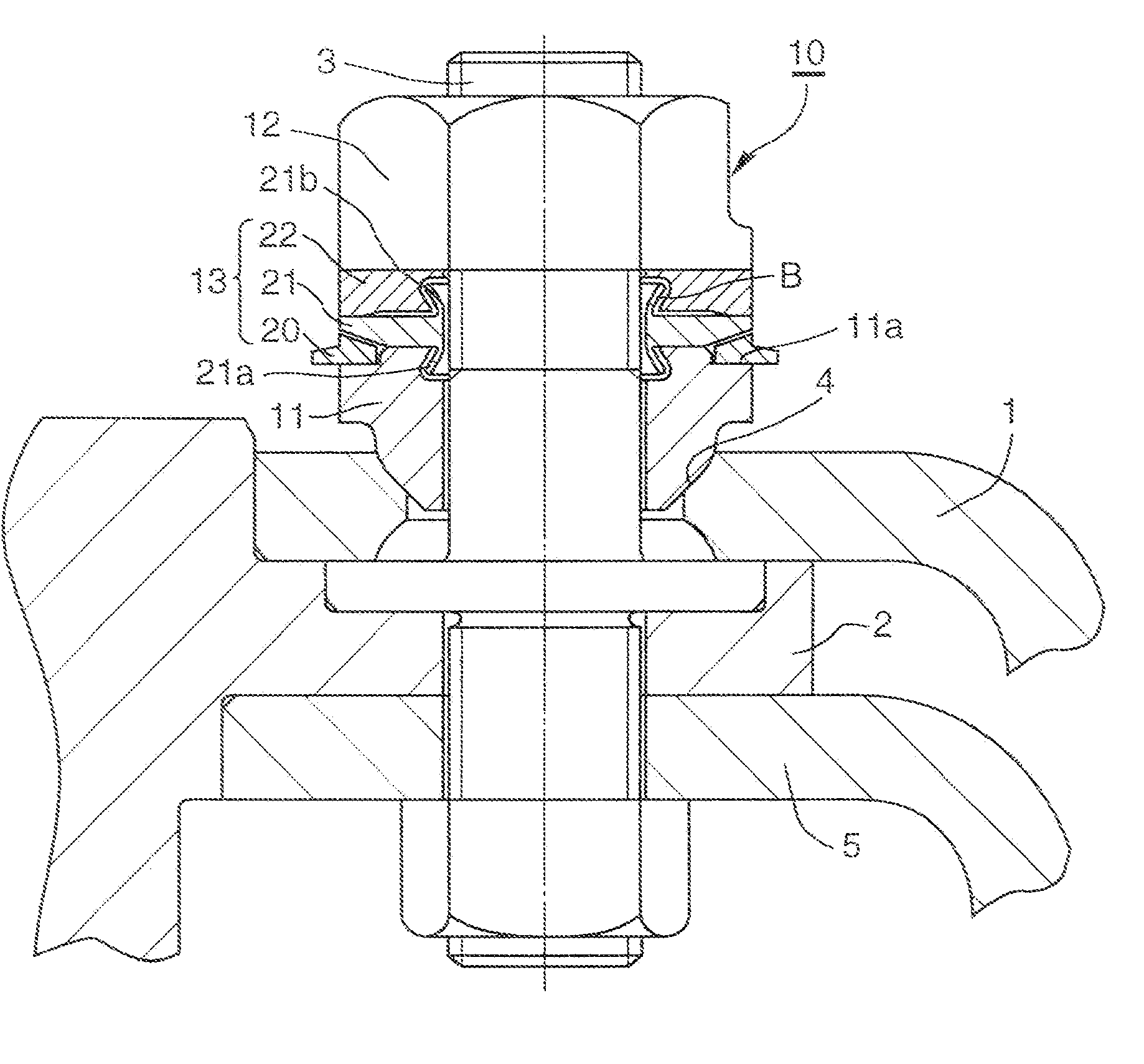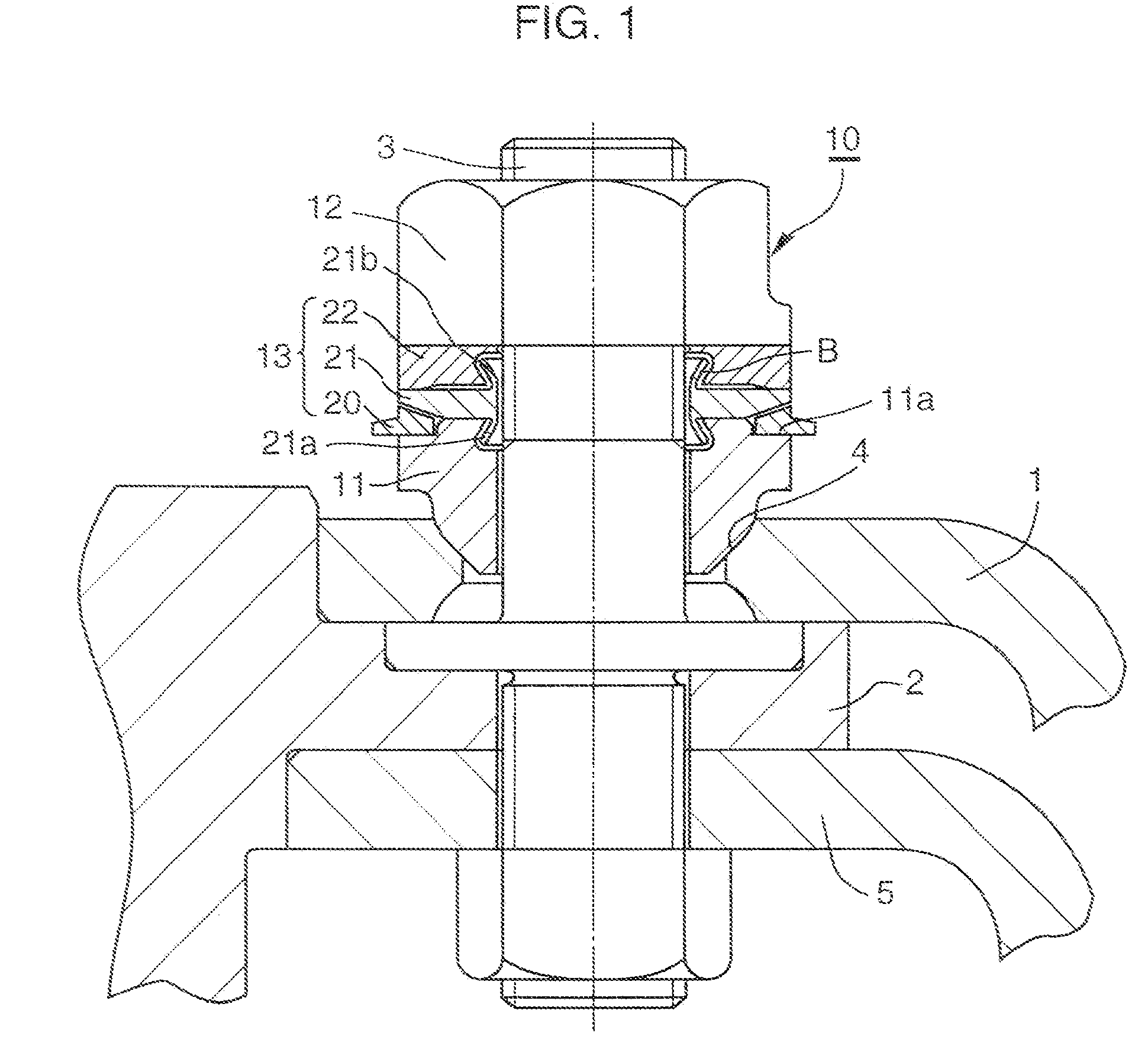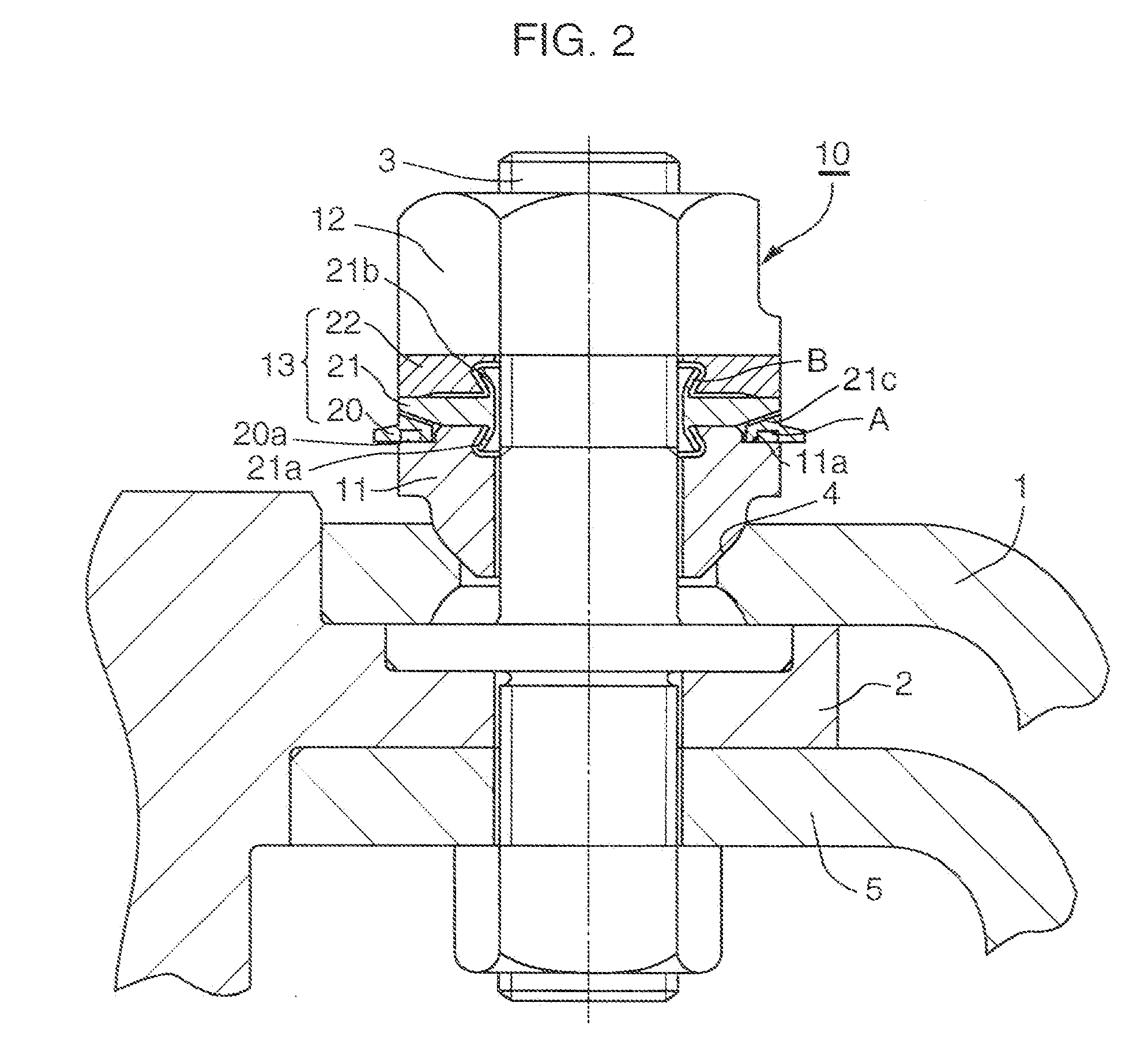Axial Force Control Nut Assembly
a technology of axial force control and nut assembly, which is applied in the direction of fastening means, screws, load-modified fasteners, etc., can solve the problems of cracking of the disk wheel, insufficient fastening, and bolt breakage,
- Summary
- Abstract
- Description
- Claims
- Application Information
AI Technical Summary
Benefits of technology
Problems solved by technology
Method used
Image
Examples
embodiment 1
b> And 18
[0116] In Embodiment 1 of the present invention, as illustrated in FIGS. 1 and 18, the ring assembly 13 of the axial force control nut assembly 10 includes the first axial force control ring 20, the elastic deformation ring 21 and the axial force transmitting ring 22 in that order in the direction from the seat member 11 toward the fastening nut 12. The first axial force control ring 20 is disposed between a stepped portion (a stepped recess portion) 11a of a radially outer portion of the seat member 11 and a tapered portion 21c of a radially outer portion of the elastic deformation ring 21 so as to be freely rotatable before the proper axial force is loaded on the bolt 3. The axial force transmitting ring 22 and the elastic deformation ring 21 contact each other at the radially outer portions of the two rings, and there is a gap between the radially inner portions of the two rings.
[0117] The ring assembly 13 does not include the excessive axial force detecting structure A...
embodiment 2
b> And 18
[0123] In Embodiment 2 of the present invention, a groove 20a, acting as the excessive axial force detecting structure A, is added to Embodiment 1 of the present invention.
[0124] In Embodiment 2 of the present invention, as illustrated in FIGS. 1 and 18, the ring assembly 13 of the axial force control nut assembly 10 includes the first axial force control ring 20, the elastic deformation ring 21 and the axial force transmitting ring 22 in that order in the direction from the seat member 11 toward the fastening nut 12. The first axial force control ring 20 is disposed between a stepped portion (a stepped recess portion) 11a of a radially outer portion of the seat member 11 and a tapered portion 21c of a radially outer portion of the elastic deformation ring 21 so as to be freely rotatable before the proper axial force is loaded on the bolt 3. The axial force transmitting ring 22 and the elastic deformation ring 21 contact each other at the radially outer portions of the two...
embodiment 3
b> And 18
[0133] In Embodiment 3 of the present invention, a second axial force control ring 23 acting as the excessive axial force detecting structure A, is added to Embodiment 1 of the present invention.
[0134] In Embodiment 3 of the present invention, as illustrated in FIGS. 3 and 18, the ring assembly 13 of the axial force control nut assembly 10 includes the first axial force control ring 20, the elastic deformation ring 21 and the axial force transmitting ring 22 in that order in the direction from the seat member 11 toward the fastening nut 12. The axial force transmitting ring 22 and the elastic deformation ring 21 contact each other at the radially outer portions of the two rings, and there is a gap between the radially inner portions of the two rings.
[0135] The ring assembly 13 of the axial force control nut assembly 10 further includes a second axial force control ring 23 (the second axial force control ring 23 does not contact the first axial force control ring 20) which...
PUM
 Login to View More
Login to View More Abstract
Description
Claims
Application Information
 Login to View More
Login to View More - R&D
- Intellectual Property
- Life Sciences
- Materials
- Tech Scout
- Unparalleled Data Quality
- Higher Quality Content
- 60% Fewer Hallucinations
Browse by: Latest US Patents, China's latest patents, Technical Efficacy Thesaurus, Application Domain, Technology Topic, Popular Technical Reports.
© 2025 PatSnap. All rights reserved.Legal|Privacy policy|Modern Slavery Act Transparency Statement|Sitemap|About US| Contact US: help@patsnap.com



